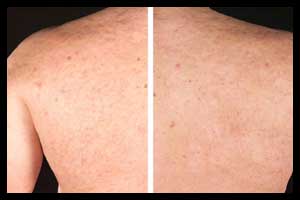- Home
- Editorial
- News
- Practice Guidelines
- Anesthesiology Guidelines
- Cancer Guidelines
- Cardiac Sciences Guidelines
- Critical Care Guidelines
- Dentistry Guidelines
- Dermatology Guidelines
- Diabetes and Endo Guidelines
- Diagnostics Guidelines
- ENT Guidelines
- Featured Practice Guidelines
- Gastroenterology Guidelines
- Geriatrics Guidelines
- Medicine Guidelines
- Nephrology Guidelines
- Neurosciences Guidelines
- Obs and Gynae Guidelines
- Ophthalmology Guidelines
- Orthopaedics Guidelines
- Paediatrics Guidelines
- Psychiatry Guidelines
- Pulmonology Guidelines
- Radiology Guidelines
- Surgery Guidelines
- Urology Guidelines
Treatment of Hidradenitis Suppurativa with SAPHO Syndrome: A Case Review

A case-based review published in the journal SAGE Open Medical Case Reports describes the 8-year treatment course of a 32-year old patient with comorbid hidradenitis suppurativa (HS) and synovitis, acne, pustulosis, hyperostosis, osteitis (SAPHO) syndrome.
Hidradenitis suppurativa and synovitis, acne, pustulosis, hyperostosis, osteitis syndrome are chronic, debilitating diseases involving apocrine gland-bearing skin inflammation and bone inflammation, respectively. Although both often present with multiple comorbidities, single patient co-presentation is rare.
A 32-year-old Caucasian male was presented in 2009 with a 3-year history of multiple interconnecting comedones in the axilla and inguinal regions, as well as scarring from previous lesions. From 2009 to 2014, initial treatment with antiseptic washes, topical clindamycin (+/- benzoyl peroxide), cloxacillin, tetracycline, cephalexin, doxycycline, amoxicillin/clavulanic acid and desonide cream only provided minimal benefit. The patient presented multiple times to the clinic during his first 6 years of care due to HS lesion flares. These were treated successfully with low-dose intralesional corticosteroid (ILC) injections, however, long-term disease stability was not maintained.
In December 2014, weekly subcutaneous injections of adalimumab were initiated and in March 2015, the patient was diagnosed with comorbid SAPHO syndrome. Methotrexate 10mg injected weekly was started in December 2015, when it was determined that the efficacy of adalimumab had been reduced. The patient's methotrexate dose was further increased to 20mg weekly after later complaints of pain in the forearms and left clavicle.
The patient's current situation, at 40 years-old, shows good control of his HS-SAPHO syndrome. "His successful HS management plan included the following: HS flares relieved by ILC injections as needed, weekly 40mg adalimumab, and weekly 20mg methotrexate/folic acid," write the authors. Lifestyle modifications, including weight loss, smoking cessation, and increased control of depression, were also implemented during his course of therapy.
Although challenging, HS and SAPHO syndrome can be managed effectively using a variety of agents. HS should be managed using a holistic approach and therapy should be chosen based on disease severity. First-line treatment for mild disease includes topical clindamycin or oral tetracycline antibiotics and second-line agents include clindamycin plus rifampin or adalimumab. ILC is utilized for rapid and local disease treatment only. SAPHO syndrome is managed using agents such as nonsteroidal anti-inflammatory drugs (NSAIDs), intra-articular or systemic steroids, doxycycline, pamidronate, and immunosuppressive agents (methotrexate, sulfasalazine, cyclosporine, and leflunomide).
When managing patients with comorbid HS and SAPHO syndrome, "NSAIDs, corticosteroids, antibiotics, and immunosuppressive agents have been the conventional approach," the authors state, adding, "Biologic agents have provided an effective, targeted therapeutic option that has changed the way a number of inflammatory conditions, including HS and SAPHO, are managed."
Based on the study, the authors concluded that there are therapeutic options that can manage both HS and SAPHO syndrome when treating a patient with both diagnoses.NSAIDs, corticosteroids, antibiotics, and immunosuppressive agents have been the conventional approach. Biologic agents have provided an effective, targeted therapeutic option that has changed the way a number of inflammatory conditions, including HS and SAPHO, are managed.
The present HS-SAPHO-syndrome case was managed effectively with a combination of adalimumab, methotrexate, and intralesional and intra-articular cortisone injections. Additional studies beyond this case-based review could yield more definitive treatment plans.
For more information click on the link: https://doi.org/10.1177/2050313X18778723

Disclaimer: This site is primarily intended for healthcare professionals. Any content/information on this website does not replace the advice of medical and/or health professionals and should not be construed as medical/diagnostic advice/endorsement or prescription. Use of this site is subject to our terms of use, privacy policy, advertisement policy. © 2020 Minerva Medical Treatment Pvt Ltd